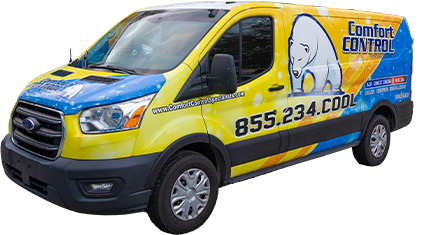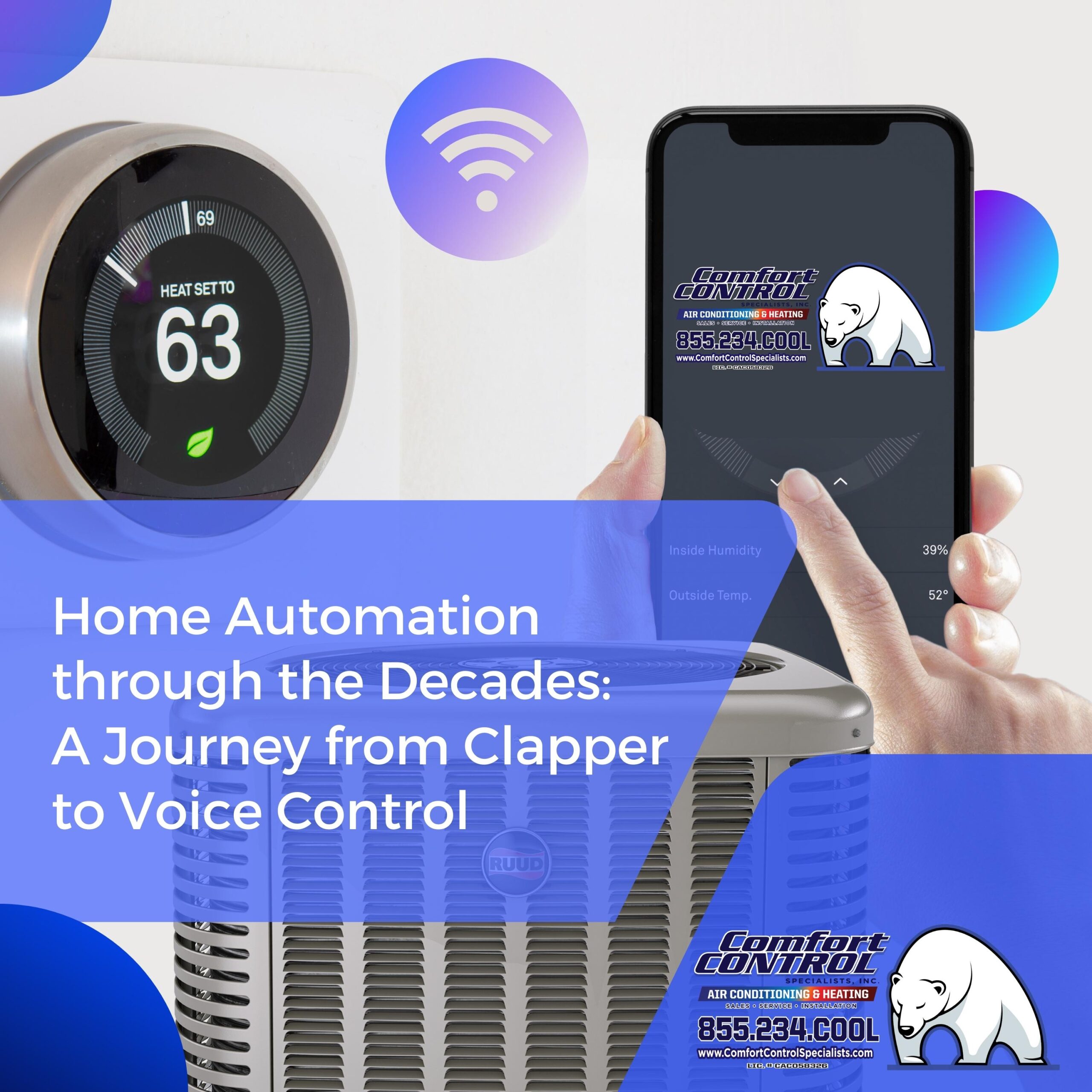[vc_row][vc_column][vc_column_text]In today’s fast-paced world, technology has become an integral part of our daily lives, making our homes smarter and more convenient. The concept of home automation has evolved significantly over the decades, revolutionizing the way we interact with our living spaces. From the humble beginnings of the Clapper to the futuristic voice control systems, we will take you on a captivating journey through the history of home automation.
-
The Rise of the Clapper
Home automation traces its roots back to the early 1980s when the Clapper made its debut. The Clapper was a simple sound-activated device that allowed users to control their lights and appliances through clapping. This innovative gadget utilized a built-in microphone to detect specific sound patterns, triggering the desired action. While it may seem primitive compared to today’s standards, the Clapper was a breakthrough at the time and marked the beginning of a new era in home automation.
Technical Fact: The Clapper used a relay circuit to detect sound patterns, converting the audio signals into electrical signals that activated or deactivated the connected devices.

-
X10 Protocol: A Game-Changer in the 1980s
As home automation gained popularity, the X10 protocol emerged as a significant advancement in the 1980s. X10 allowed devices to communicate over existing electrical wiring, making it a cost-effective solution for controlling multiple devices simultaneously. It utilized powerline communication, enabling signals to be sent and received through the electrical grid. This breakthrough technology laid the foundation for more sophisticated home automation systems in the years to come.
Technical Fact: The X10 protocol used a binary coding scheme to send commands and data over the powerline, with 1s and 0s representing on and off states respectively.
-
Infrared Remote Controls: Enhancing Convenience in the 1990s
The 1990s witnessed the widespread adoption of infrared remote controls, revolutionizing the way we interacted with our home entertainment systems. With the introduction of universal remote controls, users could now control multiple devices such as televisions, audio systems, and VCRs with a single device. Infrared technology allowed signals to be transmitted wirelessly between the remote control and the devices, providing a convenient and user-friendly experience.
Technical Fact: Infrared remote controls transmit signals using infrared light waves, which are invisible to the human eye but can be detected by the sensors in electronic devices.
-
Home Automation Meets the Internet: The 2000s and Beyond
The advent of the internet brought home automation to new heights, enabling remote access and control of various devices and systems. With the introduction of smart hubs and controllers, homeowners gained the ability to monitor and manage their homes from anywhere in the world. The internet of things (IoT) played a crucial role in connecting devices and creating a seamless ecosystem of smart home automation.
Technical Fact: Smart hubs and controllers utilize wireless communication protocols such as Wi-Fi, Zigbee, or Z-Wave to connect with compatible devices, allowing users to control them remotely through smartphone apps or web interfaces.
-
Voice Control: The Future of Home Automation
One of the most significant advancements in home automation is the integration of voice control systems. Enabled by artificial intelligence and natural language processing, voice assistants like Amazon Alexa and Google Assistant have transformed the way we interact with our homes. Through voice commands, users can control various devices, inquire about information, and even set up routines to automate daily tasks.
Technical Fact: Voice control systems use sophisticated algorithms to process spoken commands, converting them into text and then executing the appropriate actions based on predefined rules and device capabilities.
-
Machine Learning and Smart Home Automation
With the advancements in machine learning and artificial intelligence, smart home automation has become even more intelligent and intuitive. These technologies enable systems to learn and adapt to users’ preferences and behaviors, making automation more personalized and efficient. Machine learning algorithms can analyze data collected from various sensors and devices to anticipate users’ needs and adjust settings automatically.
Technical Fact: Machine learning algorithms use statistical models and algorithms to analyze patterns and make predictions based on large amounts of data. In the context of smart home automation, they can optimize energy usage, predict user preferences, and automate routine tasks.
-
Integration of Sensors for Enhanced Automation
As technology progresses, the integration of sensors has played a pivotal role in expanding the capabilities of home automation systems. Sensors such as motion detectors, light sensors, temperature sensors, and occupancy sensors enable automation systems to detect changes in the environment and trigger actions accordingly. For example, when a motion sensor detects movement in a room, it can turn on the lights automatically, enhancing convenience and energy efficiency.
Technical Fact: Sensors used in home automation systems employ various technologies such as passive infrared (PIR), ultrasonic, or microwave to detect specific environmental changes or user presence.
-
Energy Management and Efficiency
Home automation has made significant contributions to energy management and efficiency. With the ability to monitor and control devices remotely, homeowners can optimize energy consumption, reducing waste and lowering utility bills. Smart thermostats, for instance, can learn occupants’ behavior and adjust temperature settings accordingly, resulting in energy savings. Additionally, energy monitoring systems provide real-time insights into energy usage, empowering users to make informed decisions about their consumption patterns.
Technical Fact: Smart energy management systems rely on real-time data collection, cloud computing, and advanced algorithms to analyze energy usage patterns, identify inefficiencies, and suggest energy-saving measures.
-
Enhanced Security and Surveillance
Home automation has also made significant strides in the realm of security and surveillance. Integrated systems allow homeowners to remotely monitor and control security cameras, door locks, and alarm systems, providing peace of mind and enhanced protection. Moreover, advanced technologies like facial recognition and geofencing enable intelligent automation of security features, ensuring that only authorized individuals can access the property.
Technical Fact: Security systems in home automation often utilize encrypted communication protocols, secure cloud storage, and advanced authentication mechanisms to protect user privacy and prevent unauthorized access.
-
The Future of Home Automation
As technology continues to evolve, the future of home automation holds even more exciting possibilities. Emerging technologies like augmented reality (AR), virtual reality (VR), and wearable devices may find their way into the realm of home automation, offering new ways to interact with and control our living spaces. Furthermore, the integration of smart grids and renewable energy sources can lead to more sustainable and eco-friendly automation solutions.
Technical Fact: Augmented reality and virtual reality can enhance the user experience by providing interactive visualizations and virtual control interfaces, allowing users to interact with their home automation systems in immersive ways.
Conclusion
From the Clapper to voice control systems, the journey of home automation has been nothing short of remarkable. The technical advancements and innovations over the years have transformed our homes into intelligent spaces that cater to our needs and improve our quality of life. As we look to the future, the culmination of home automation is exemplified in the integration of smart heating and cooling systems.
Imagine a home where the temperature adjusts itself based on your preferences and occupancy patterns. Smart thermostats, powered by advanced algorithms and machine learning, can learn your heating and cooling preferences, adjust settings automatically, and optimize energy usage. These systems enable you to create customized schedules, monitor energy consumption, and even control the temperature remotely via smartphone apps.
With smart heating and cooling systems, you no longer have to worry about forgetting to adjust the thermostat before leaving home or arriving to an uncomfortable environment. These systems provide convenience, energy savings, and a comfortable living environment year-round. They seamlessly integrate with other home automation devices, such as motion sensors and occupancy detectors, to ensure efficient heating and cooling based on occupancy.
The culmination of home automation and smart heating and cooling systems brings us closer to the vision of a truly interconnected and intelligent home. As technology continues to advance, we can expect further enhancements, such as the integration of renewable energy sources and predictive algorithms, to make our homes even more energy-efficient and environmentally friendly.
In conclusion, home automation has come a long way, evolving from simple clapping controls to sophisticated voice-activated systems and beyond. The integration of smart heating and cooling systems represents the pinnacle of home automation, providing convenience, energy efficiency, and personalized comfort. As we embrace the future of home automation, we can look forward to a world where our homes adapt to our needs, making our lives more comfortable and sustainable than ever before. So, get ready to experience the ultimate synergy of home automation and smart heating and cooling systems in your own abode.
If you live in Odessa, Keystone, Spring Hill, Tarpon Springs, Land O Lakes, Oldsmar, Brooksville, or the surrounding areas, please don’t hesitate to contact the Comfort Control Specialists for your heating and cooling automation needs or for a comprehensive AC inspection and tune-up.[/vc_column_text][/vc_column][/vc_row]



